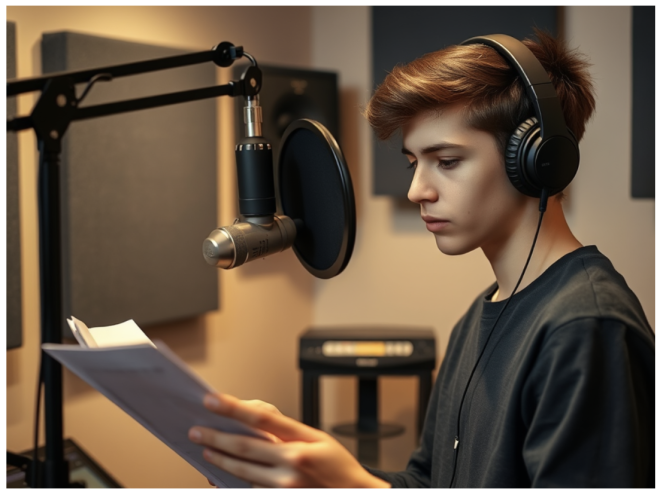- Change theme
Human Reader vs Text-to-Speech: Which One is Better for Reading?

The digital age has not only changed the way we work, but also the way we read.
03:32 07 May 2025
The digital age has not only changed the way we work, but also the way we read. For centuries, human reading has been standard. Now, with the advent of text-to-speech (TTS) technology, people have an alternative. So, which one is better for reading, human reader or TTS?
Human Readers vs. Text to Speech
At their core, human readers and text to speech tools do the same job — they read text out loud. But how they do it is very different.
Human Readers bring emotion, tone, and understanding to the table. They can change their voice depending on the mood of the story. For example, they sound excited when reading an adventure, or serious when reading important news. They also handle tricky parts like jokes, poetry, or mixed languages with ease.
TTS Tools, on the other hand, are about speed and access. With just one click, they turn written words into sound. Many TTS tools let you pick accents, voices, speed, and pitch. Need British English or American English? No problem. Want a fast voice or a slow one? You decide. Some newer AI voices even sound very natural.
When to Choose a Human Reader?
Depending on the situation, a human reader might be the better pick.
Learning and Education
If you’re trying to really learn something — like studying a new language — a human reader helps a lot. They can correct your mistakes, show you how to say tricky words, and adjust based on what you need. A TTS tool can be great for practicing listening, but it won't tell you if you’re saying a word wrong.
Entertainment and Storytelling
Imagine listening to a dramatic story or a poem. A human voice adds feeling — soft when sad, loud when exciting. That emotional touch pulls you into the story. That’s why most audiobooks and podcasts still use real people to read.
Complex and Special Texts
Human readers also shine when the text is complicated. Technical words, jokes, sarcasm, or mixed languages can confuse TTS tools. A human reader knows how to pause, laugh, or emphasize the right words.
However, keep in mind: human readers cost more money, are harder to find, and can make mistakes too. They also need training and time, especially if the job is important like during a school test.
When to Choose a TTS Tool?
TTS tools are a smart choice in many other cases. Let's look at a few.
Work and Productivity
Need to quickly "read" a long report while doing chores? A TTS tool can help you multitask. It's super fast, easy to set up, and can handle huge amounts of text without getting tired.
Accessibility
For people who are blind or have trouble reading, TTS is life-changing. It gives them access to websites, emails, and books in just a click. Plus, it's affordable and available 24/7. Human readers for every task would be costly and hard to manage.
Fast Content Creation
If you create videos, online courses, or other content, TTS helps you pump out audio versions quickly. While it may not be as rich as a human voice, it's getting better every year, especially with new AI technologies like MiniMax Text-to-Speech.
Still, TTS has its limits. Even the best voices can sound a little robotic. And while they are improving fast, many TTS voices struggle with humor, deep emotion, or complex text.
Which One is Better for Reading?
Honestly, it depends on what you need.
If you want deep understanding, real emotion, and a true connection to the words, a human reader is the best choice. Human voices can bring stories to life. They can make you feel the sadness, joy, excitement, or even the humor hidden in the text. This is why human readers are perfect for emotional stories, big events, and important lessons.
But if you care more about speed, saving money, or just getting through a lot of reading quickly, a Text-to-Speech (TTS) tool is a great option. TTS tools can read anything you want at the touch of a button. They are fast, easy to use, and can even switch between different languages and accents.
In many cases, using both is the smartest way. You can rely on TTS tools for everyday reading — like emails, reports, or study notes. Then, for special moments, like listening to a favorite novel or preparing for a big speech, you can enjoy the richness of a human voice.
Lots of people already mix both, and it works really well!
Conclusion
As TTS technology grows, the line between human voices and AI voices is getting thinner. One day soon, TTS might sound almost as good as real people — or even better for some tasks. Tools are leading the way.
Still, the magic of human emotion, creativity, and understanding will always have a special place in reading. After all, stories are not just about words — they're about feelings too.
Next time you listen to a book or read an article, ask yourself:
"Do I need speed, or do I want a story that touches my heart?"
Maybe the best answer is — sometimes both.
